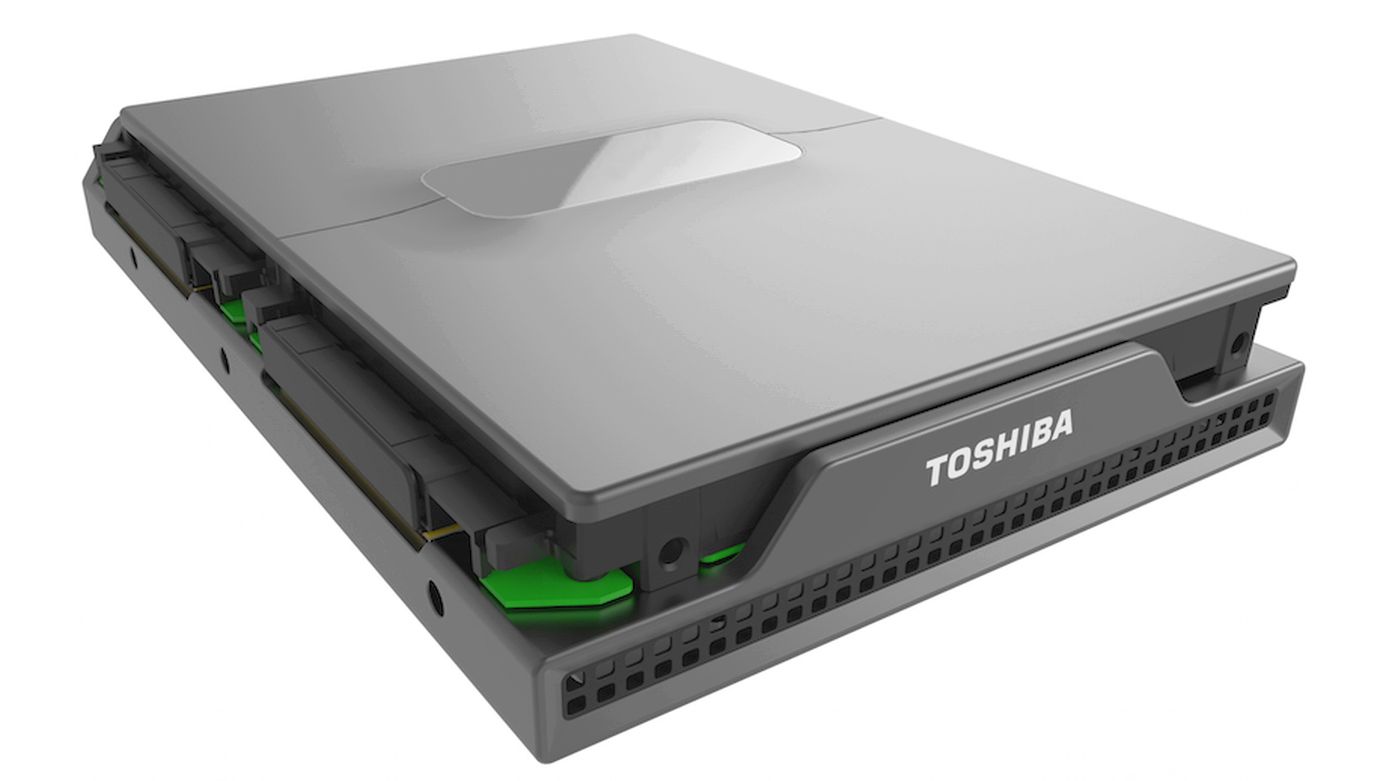How Toshiba's new storage device could change the data centre
The drive become the server

Poor hard disk drive; advances in silicon manufacturing have allowed solid state drives to capture the headlines leaving the traditional spindle-spinning devices in the shadows. But things are about to get more exciting for the latter.
Toshiba made an important announcement yesterday as it unveiled a new solution that essentially is a new class of server (the Japanese company calls it a multi-device storage solution), one that integrates, in an industry-standard, 3.5-inch form factor, compute (64-bit, probably ARM), networking (Gigabit Ethernet) and storage (with a pinch of SSD storage for low latency tasks and onboard RAM).
Future iterations – we guess - could include an all-SSD model, a 2.5-inch one or even, may be, just may be, a 5.25-inch model.
The whole set is enabled by an unidentified Linux platform that will allow the device to run what Toshiba calls, the next generation of software-defined storage applications.
The HDD becomes the server
The implications for the industry are tremendous; such a solution could allow data centres to offer a richer set of scale-out object storage features.
From Toshiba's perspective, adding compute and networking features helps maintain margins while simplifying the overall calculation of total cost of ownership (TCO) and the infrastructure needed, removing what it calls commodity servers used for storage management.
The other announcement that dovetails nicely with it is that Toshiba has finally committed to deploying SMR technology, well after WD and Seagate.
Sign up to the TechRadar Pro newsletter to get all the top news, opinion, features and guidance your business needs to succeed!
Interestingly, the company managed to produce two products that shows its skills when it comes to cramming bits on a platter. The Canvio 3TB, an external 2.5-inch hard disk drive, managed to packs four 750GB platters in a tiny 15mm drive using perpendicular magnetic recording (PMR) only.
In addition, late last year, it debuted a 6TB hard disk drive that apparently squeezed six 1TB platters without the need of helium gas – like HGST - or any other exotic technologies. That drive is likely to be at the heart of Tosihba's new storage solution.
More coming up later
Switching to SMR, commonly known as shingles, will increase the storage density significantly perhaps as much as 40% meaning that the Canvio 3TB could pack as much as 4TB.
It will also include a random write penalty though which might explain why it might be useful to pack a small amount of fast-storage and compute on the drive itself.
It is likely that other vendors will follow suit. When we interviewed Seagate's Joe Fagan in March, he hinted that his company may and more processing power to the hard drive as its remit goes beyond just holding bits.
Adding compute would allow it to take on more tasks like inline de-duplication and real-time compression. Most enterprise drives already do encryption.
"It would need to be done in relationship with the wider industry", he added back then. Don't be surprised if WD (or rather its subsidiary HGST) and Seagate do the same as Toshiba's move seems to be motivated by customer demand.
The affordability of compute power, the increasing diversity of compute solutions, maturing technologies (both on the integration and manufacturing sides) and the rise in competition can only mean good news for storage manufacturers that want to move up the stack.

Désiré has been musing and writing about technology during a career spanning four decades. He dabbled in website builders and web hosting when DHTML and frames were in vogue and started narrating about the impact of technology on society just before the start of the Y2K hysteria at the turn of the last millennium.